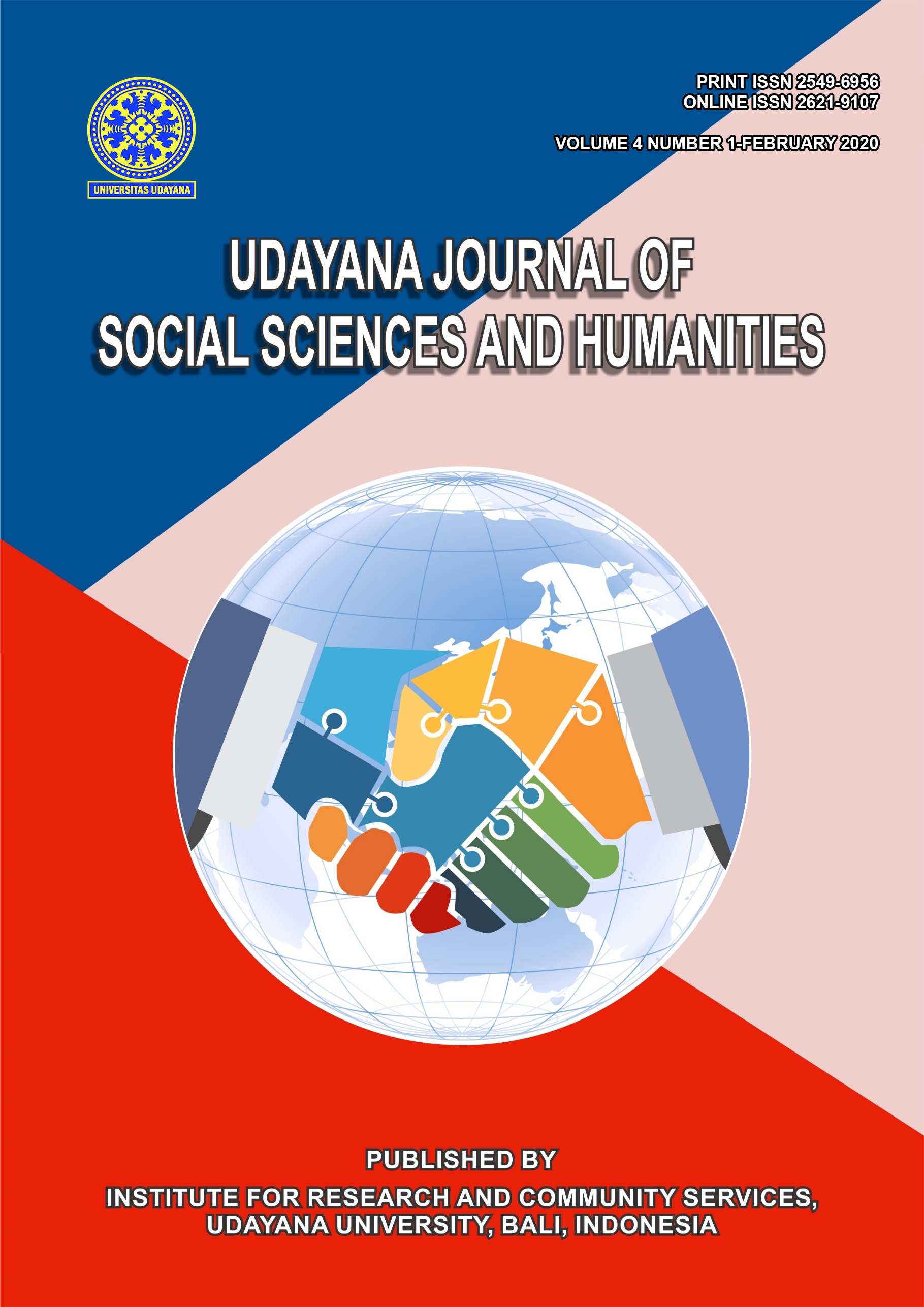Children Of Men (2006): Representation of Modern Spirituality in an Apocalyptic Dystopian World
Abstract
In the post-industrialization era, spirituality has gone through many shifts. Specifically, perceptions of spirituality have changed for the worst after 9/11, which inspired several movies in portraying spirituality within the society in science fiction movies. Children of Men (2006) is one of science fiction movies that portray biblical apocalyptic narratives in which spirituality is a crucial element in the movie, indicating how influential spirituality is in popular culture. This research paper aims to analyze how modern spirituality is represented through the shift from Weber's concept of disenchantment to Jenkin's concept of re-enchantment, examining how it affects oneself in the biblical apocalyptic narrative. The representation is analyzed by focusing on a huge alteration that resulted from the attack of 9/11, which affects how the disenchanted society in the movie deals with the gloom of apocalypse. These responses lead to re-enchantment as the movie incorporates biblical allegories that represent hope for tomorrow, which is fundamental teaching for most religions.
Downloads
References
Berger, P., Weiming, T., Sack, J., Weigel, J., Martin, D., Davie, G., An-Na’im, A. (2001). The Desecularization of the World: Resurgent Religion and World Politics. Sociology of Religion. P.L. Berger (Ed.). SOCIOL RELIG. 62. 10.2307/3712234.
Black, W. (2010). Beyond the End of the World - 2012 and apocalypse. Lulu.com, 27.
Bordwell, D., & Thompson, K. (2004). Film art: An introduction. Boston: McGraw-Hill.
Callahan, M. (2017). Weaponizing language: How the meaning of ‘Allahu Akbar’ has been distorted. Retrieved from https://news.northeastern.edu/2017/11/08/weaponizing-language-how-the-meaning-of-allahu-akbar-has-been-distorted/
Chaudhary, Z. (2009). Humanity adrift: race, materiality, and allegory in alfonso cuarón's children of men. Camera Obscura, 24 (3 (72)): 73-109. https://doi.org/10.1215/02705346-2009-010.
Domingo, J. (2015). Liquid cinematography and the representation of viral threats in Alfonso Cuarón's "Children of Men" / Cinematografía líquida y la representación de amenazas virales en "Children of Men", de Alfonso Cuarón. Atlantis, 37(2), 137-153. Retrieved from www.jstor.org/stable/24757787.
French, P. (2004). How to spook village people. The Guardian review. Retrieved from https://www.theguardian.com/theobserver/2004/aug/22/features.review47.
Gawky. (2019). Merriam-Webster Online Dictionary. Retrieved from https://www.merriam-webster.com/dictionary/gawky.
Hamner, M. (2015). Sensing religion in Alfonso Cuarón’s “Children of Men.” Religions, 6(4), 1433–1456. doi: 10.3390/rel6041433.
Healey, S. (2005). Religion and terror: A post-9/11 analysis. International Journal on World Peace, 22(3), 3-23. Retrieved from www.jstor.org/stable/20753495.
Jenkins, R. (2000). Disenchantment, enchantment and re-enchantment: Max Weber at the millennium. Max Weber Studies, 1(1), 11-32. Retrieved from www.jstor.org/stable/24579711.
Meynell, H. (2011). Literature and Theology: New Interdisciplinary Spaces. H. Walton (Ed.). The Heythrop Journal, 52(6), 1081–1082. doi: 10.1111/j.1468-2265.2011.00699_39.x.
O'Donnell, M. (2015). Children of Men's ambient apocalyptic visions. Journal of Religion and Popular Culture, 27 (1), 16-30.
Rajput, S. (2016). The source, meanings, and use of "mudra" across religions. doi: 10.5281/zenodo.155343. Retrieved from https://www.researchgate.net/publication/308693036_The_Source_Meanings_And_Use_Of_Mudra_Across_Religions
Repent. (2019). Cambridge Online Dictionary. Retrieved from https://dictionary.cambridge.org/dictionary/english/repent.
Riesman, A. (2016). Future shock: Director Alfonso Cuarón revisits Children of Men, his overlooked 2006 masterpiece, which might be the most relevant film of our dark new century. Retrieved from https://www.vulture.com/2016/12/children-of-men-alfonso-cuaron-c-v-r.html.
Rotten Tomatoes. (n.d.). Retrieved from https://www.rottentomatoes.com/m/children_of_men.
Schwartzman, S (2016). Children of men and a plural messianism, Journal of Religion & Film: (13) 1, Article 1, 3.
Spencer, M. (2012). What is spirituality? A personal exploration. Retrieved from https://www.rcpsych.ac.uk/docs/default-source/members/sigs/spirituality-spsig/what-is-spirituality-maya-spencer-x.pdf?sfvrsn=f28df052_2.
Swartz, Z. (2009). Ever is no time at all: theological issues in post-apocalyptic fiction and cormac mccarthy’s the road. (master’s thesis). Retrieved from Georgetown Library Repository https://repository.library.georgetown.edu/bitstream/handle/10822/553396/swartzzachary.pdf?sequence=1.
Taylor, M. (2007). After God. Bibliovault OAI Repository, the University of Chicago Press. 10.7208/chicago/9780226791722.001.0001.
Weber, M. (1963). The Sociology of Religion. Boston: Beacon Press.
Woolley A. (2014) States of Belonging: Alfonso Cuarón’s Children of Men. In: Contemporary Asylum Narratives. London: Palgrave Macmillan.






